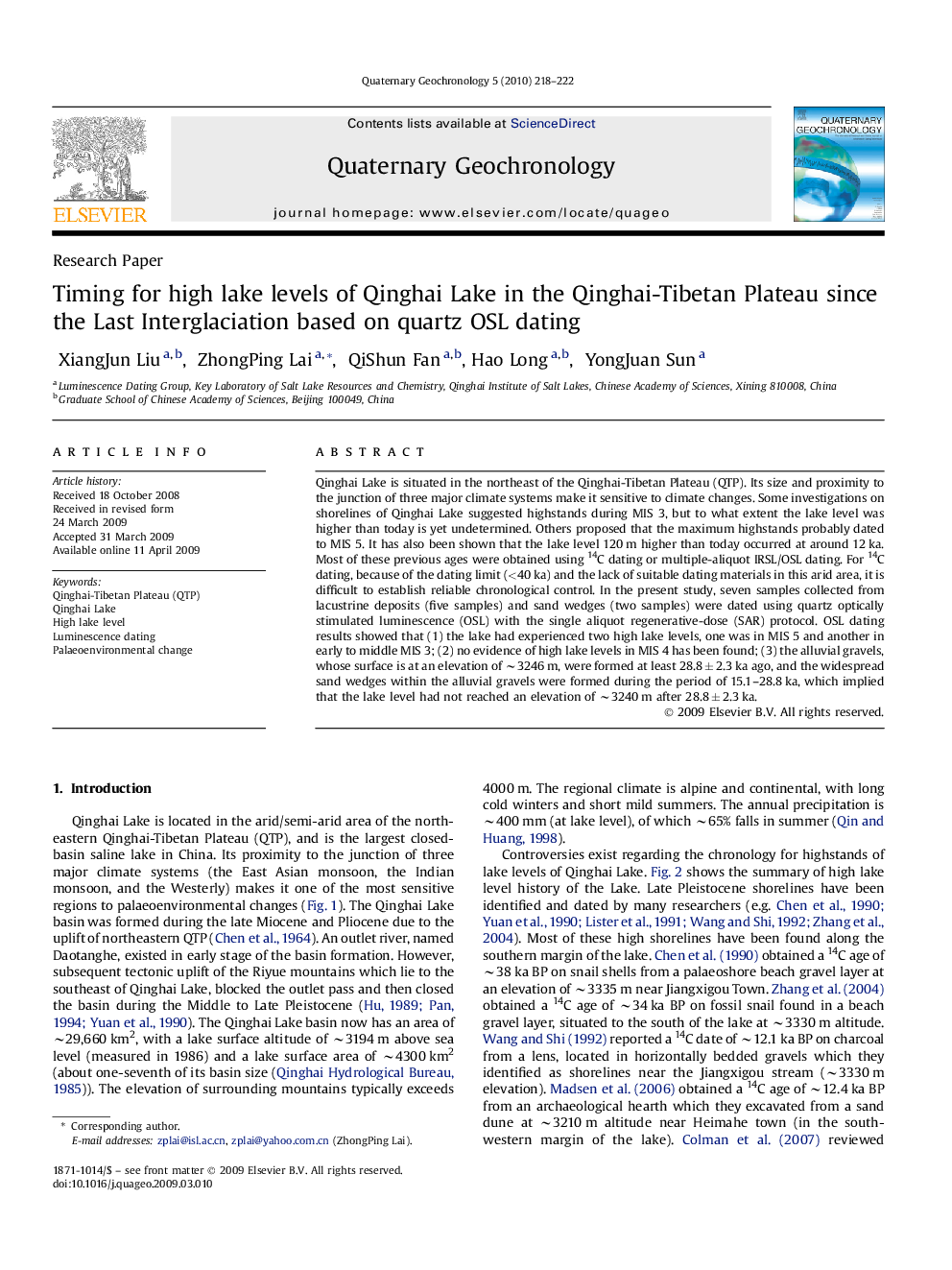| Article ID | Journal | Published Year | Pages | File Type |
|---|---|---|---|---|
| 4725516 | Quaternary Geochronology | 2010 | 5 Pages |
Qinghai Lake is situated in the northeast of the Qinghai-Tibetan Plateau (QTP). Its size and proximity to the junction of three major climate systems make it sensitive to climate changes. Some investigations on shorelines of Qinghai Lake suggested highstands during MIS 3, but to what extent the lake level was higher than today is yet undetermined. Others proposed that the maximum highstands probably dated to MIS 5. It has also been shown that the lake level 120 m higher than today occurred at around 12 ka. Most of these previous ages were obtained using 14C dating or multiple-aliquot IRSL/OSL dating. For 14C dating, because of the dating limit (<40 ka) and the lack of suitable dating materials in this arid area, it is difficult to establish reliable chronological control. In the present study, seven samples collected from lacustrine deposits (five samples) and sand wedges (two samples) were dated using quartz optically stimulated luminescence (OSL) with the single aliquot regenerative-dose (SAR) protocol. OSL dating results showed that (1) the lake had experienced two high lake levels, one was in MIS 5 and another in early to middle MIS 3; (2) no evidence of high lake levels in MIS 4 has been found; (3) the alluvial gravels, whose surface is at an elevation of ∼3246 m, were formed at least 28.8 ± 2.3 ka ago, and the widespread sand wedges within the alluvial gravels were formed during the period of 15.1–28.8 ka, which implied that the lake level had not reached an elevation of ∼3240 m after 28.8 ± 2.3 ka.
